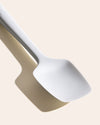
Grilling pork chops is a culinary delight revered across the globe. There's something undeniably satisfying about the smoky aroma, the charred crust, and the juicy tenderness that grilling imparts on pork chops.
Whether you're enjoying an outdoor barbecue or simply craving a delicious meal, grilled pork chops are a go-to choice for meat lovers. From methods and cook times to flavors and grilling tools, let’s fire up the grill and review the art of grilling pork chops.
Why Does Grilling Make Pork Chops Taste So Good?
Grilling is hard to beat when it comes to elevating the taste of pork chops. The intense heat of the grill creates an experience that results in unparalleled flavor and texture. For starters, grilling imparts a beautiful caramelization on the surface of the pork chops. As the meat cooks, the high heat causes sugars and proteins to react, creating a deliciously flavorful crust.
Additionally, the smoky aroma that emanates from the grill adds a unique depth to pork chops. The fragrant combination of wood or charcoal and sizzling meat creates an enticing scent. Furthermore, the light char that develops on the outside of the pork chops contributes to an appealing complexity of flavors.
Notably, grilling helps retain pork chops' juiciness while achieving the desired tenderness. The heat quickly sears the exterior, sealing in the natural moisture within the meat. This results in a succulent bite, ensuring each mouthful is bursting with flavor.
Grilling is not just a cooking method — it's an experience that brings out the best in pork chops (and many other meats).
What Are the Best Grilling Methods & Times for Pork Chops?
It's important to employ the right grilling methods and be mindful of cooking times to achieve perfectly grilled pork chops. Two popular grilling methods for pork chops are direct heat and indirect heat.
Direct Heat
When using direct heat, the pork chops are placed directly over the flames or heat source. This method is excellent for thinner pork chops, around one inch or less in thickness. Start by searing the chops on high heat on each side for a couple of minutes, creating a flavorful crust. Then, reduce the heat to medium and continue grilling until the internal temperature reaches the desired doneness.
Indirect Heat
For thicker pork chops, indirect heat is recommended. This involves creating a two-zone fire on your grill, with one side set to high heat and the other side set to low heat or turned off.
Begin by searing the pork chops on the hot side, then move them to the cooler side to finish cooking. This method allows for more controlled cooking, resulting in evenly cooked pork chops with a juicy interior.
Cook Times
Regarding cooking times, thinner pork chops typically require around four to six minutes per side on direct heat or 8-12 minutes on indirect heat. Thicker pork chops may take 10-12 minutes per side on direct heat or 15-20 minutes on indirect heat. However, it's important to rely on a meat thermometer to ensure the pork chops reach an internal temperature of 145°F (63°C) for medium-rare or 160°F (71°C) for well-done.
Are Thick or Thin Pork Chops Best for Grilling?
When it comes to grilling pork chops, the choice between thick or thin chops can affect the cooking process and final result. Understanding the differences and considering your preferences will help you make the right decision.
Thick pork chops, typically one inch or more in thickness, offer certain advantages when it comes to grilling. With their larger size, they can withstand higher heat without overcooking or drying out. The added thickness allows for more leeway in cooking time, making achieving an evenly cooked interior easier while maintaining a caramelized crust.
Thick pork chops are perfect for grilling with the indirect heat method or for those who prefer their chops with a juicy, medium to medium-well doneness. Remember that the cooking times for thick pork chops will be longer than for thinner cuts.
On the other hand, thin pork chops, usually less than one inch thick, have their own appeal for grilling. Due to their reduced thickness, they cook faster. However, they are more prone to drying out.
Their thinness means they can quickly develop a delectable charred crust, which is ideal if you prefer a more well-done chop. Thin pork chops are well-suited for grilling using the direct heat method or when you're short on time and desire a quick and satisfying meal.
Why It’s Important to Ensure That Pork Is Fully Cooked
Cooking pork to the appropriate internal temperature is vital to ensure both safety and flavor. While retaining a slightly pink center for added juiciness is tempting, avoiding undercooked pork is important for health reasons. Undercooked pork may contain harmful bacteria, such as Trichinella spiralis, which can cause foodborne illnesses.
To ensure safety, always use a reliable meat thermometer to check the doneness of pork chops. Insert the thermometer probe into the thickest part of the chop, away from the bone. The recommended internal temperature for fully cooked pork chops is a minimum of 145°F (63°C), followed by a three-minute rest before serving. This temperature ensures the pork is safe to eat while maintaining its juiciness and flavor.
By achieving the appropriate internal temperature, you can enjoy tender, succulent pork chops without compromising on taste or safety. Remember, it's better to be cautious and fully cook the pork chops (an internal temperature of 160°F) rather than risk potential health issues.
What Are the Best Rubs & Seasonings for Grilled Pork Chops?
Enhancing the flavor of grilled pork chops is easier with the right combination of rubs and seasonings. There's a world of possibilities to explore when it comes to seasoning options. The choice ultimately depends on personal preferences and desired flavor profiles.
A classic option is a simple dry rub consisting of ingredients like salt, black pepper, garlic powder, and paprika. This basic blend enhances the natural taste of the pork while adding a touch of smokiness and mild spice. For those who prefer a bolder flavor, consider experimenting with aromatic herbs like rosemary, thyme, or oregano in the rub.
Marinating pork chops is another way to infuse flavor into the meat. Citrus-based marinades, such as lemon or orange juice combined with herbs and garlic, lend a bright and tangy profile to the pork chops. Alternatively, try a combination of soy sauce, ginger, and honey for a savory and slightly sweet glaze.
Remember to give the rubs or marinades enough time to penetrate the meat. Ideally, let the flavors mingle for at least 30 minutes or refrigerate overnight for more intense results.
Finding the perfect rub or seasoning for grilled pork chops can be exciting. Don't be afraid to experiment and adjust the flavors to suit your taste buds.
The Takeaway
Grilling pork chops is both an art and a science, resulting in delectable flavors that make every bite sensational. You can create a culinary masterpiece right in your backyard by understanding why grilling enhances the taste of pork chops and mastering the best methods and times.
Remember the importance of fully cooking pork to ensure both safety and optimal taste. By using a meat thermometer and reaching the recommended internal temperature of 145°F (63°C) for medium-rare or 160°F (71°C) for well done, you can savor pork chops that are juicy, tender, and free from any health risks.
Don't be afraid to get creative with rubs and seasonings, exploring different flavor combinations to elevate your grilled pork chops to new heights. The cooking tools that facilitate this delicious journey are just as important, from a reliable grill to handy tongs, flippers, and brushes.
So, ignite your grills, embrace the smoky aromas, and join us on a flavorful adventure with grilled pork chops. Discover the joy of creating exceptional meals that bring people together and delightfully make your palate sing.
Sources:
Pork Cooking Temperature | Pork.org
BBQ 101: What’s the Difference Between Direct Heat and Indirect Heat? | MasterClass

















